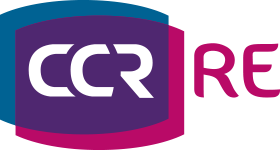
Capacity still there but in slight decline and more selective
In the previous newsletter, I indicated that the crisis caused by Covid-19 should demonstrate that ILS are not an ephemeral asset class. Even if it is still too early to draw conclusions and even though a "flight to liquidity" has been observed, there has only been a decline of around 4% in alternative capital, according to Aon.
This drop is largely attributable to the loss experience of the last three years, including the impacts of Covid-19, which implies trapped capital (around $15 billion) in order to meet , if need be, the claim payments commitments.

Nevertheless, if we focus on the "Pure Players", i.e. funds dedicated to ILS, Assets under Management (AuM) fell by 5% to $70bn according to a recent article in Trading Risk dated 10th of August 2020. This being said, we note, various fortunes on this segment because if these funds show a decline, those supported by a reinsurer have a modest growth of 1.7%, to $22.4 billion.
In addition, this article written by Lucy Jones and Fiona Robertson details the evolution of Assets under Management of the main ILS funds (over $2bn) since 2016. This is quite enlightening!
Beyond the figures, it is worth noting the evolution of the strategy of several funds, nowfavouring Cat Bonds to the detriment of Sidecars. Indeed, there is no secondary market for the latter, making this investment illiquid to say the least.
Moreover, while Cat Bonds operate on the basis of named perils and therefore excluding for almost all of them the pandemic risks, this is not necessarily the case for other types of structure such as collateralised reinsurance or sidecars for which there is still uncertainty for many of them about their potential exposure to silent covers linked to the consequences of the pandemic.

This will not be without any impacts for coming renewals and particularly for the issuance of new vehicles. Although those that have been issued for several years should be able to cope, fundraising will obviously be more complicated than in the past, as it is now felt.
The level of losses that the industry has been experiencing since 2017 implies an increase in demand for reinsurance as well as a tightening of terms and conditions, as reconfirmed by the June 1 renewals. Therefore, this is likely to provide investors with interesting prospects in the coming months.
However, they will certainly be looking for partnerships offering the best possible alignment of interests and guided by recognized underwriting policies.
Bearing this in mind, it is interesting to note that despite the failure of the takeover of Partner Re by Covea, a partnership agreement in the field of investment and reinsurance has been announced between Exor and the mutualist group. The French company is committed to invest €1.5 billion, half of which will be invested in reinsurance funds, being sidecars managed by Partner Re.
This agreement enables the Bermudian to secure €750M of capital to feed its sidecar in a challenging environment with regards to the retrocession market.
As indicated in the newspaper Les Echos, this appears to be an elegant way for Exor to recover part of the break-up fees via the commissions generated by the sidecar.
A new ILS jurisdiction on the verge of emerging, demonstrating the strategic role of ILS
Whereas in the previous newsletter, Singapore's ambitions to become an attractive alternative for ILS were mentioned. We learned during the virtual event (due to pandemic) organized in July "Artemis ILS Asia 2020" that the Monetary Authority of Singapore (MAS) will extend its incentive scheme to December 31, 2022 in order to make the city state a leading hub for ILS in Asia. It is also understood that Singapore will extend this scheme to all products in this business segment (Collateralised Reinsurance, Sidecars and ILW).Nevertheless, the surprise comes from Brazil.

Indeed, we learn, still thanks to Artemis and an article by Steve Evans, that Brazil is assessing the creation of a regulatory and legislative framework to allow the issuance of ILS.
More than ever, ILS are efficient capital management tools for (re)insurers and regulators appreciate such benefits. They glimpse all the interest in seeing the development of frameworks conducive to their emergence.

